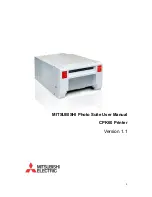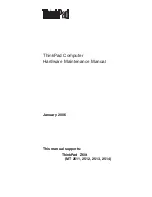
Configuring Communication Profiles
289
n
ov
do
cx (e
n)
16
Ap
ril 20
10
The assertion consumer service at the service provider performs a back-channel exchange with
the artifact resolution service at the identity provider. Artifacts are small data objects pointing
to larger SAML protocol messages. They are designed to be embedded in URLs and conveyed
in HTTP messages.
Login:
Specifies the communication channel to use when the user logs in. Select one or more
of the following:
Post:
A browser-based method used when the SAML requester and responder need to
communicate using an HTTP user agent. This occurs, for example, when the
communicating parties do not share a direct path of communication. You also use this
when the responder requires user interaction in order to fulfill the request, such as when
the user must authenticate to it.
Redirect:
A browser-based method that uses HTTP 302 redirects or HTTP GET requests
to communicate requests from this identity site to the service provider. SAML messages
are transmitted within URL parameters.
Single Logout:
Specifies the communication channel to use when the user logs out. Select one
or more of the following:
HTTP Post:
A browser-based method used when the SAML requester and responder
need to communicate by using an HTTP user agent. This occurs, for example, when the
communicating parties do not share a direct path of communication. You also use this
when the responder requires user interaction in order to fulfill the request, such as when
the user must authenticate to it.
HTTP Redirect:
A browser-based method that uses HTTP 302 redirects or HTTP GET
requests to communicate requests from this identity site to the service provider. SAML
messages are transmitted within URL parameters.
SOAP:
Uses SOAP back channel over HTTP messaging to communicate requests from
this identity provider to the service provider.
Name Management:
Specifies the communication channel for sharing the common identifiers
for a user between identity and service providers. When an identity provider has exchanged a
persistent identifier for the user with a service provider, the providers share the common
identifier for a length of time. When either the identity or service provider changes the format
or value to identify the user, the system can ensure that the new format or value is properly
transmitted. Select one or more of the following:
HTTP Post:
A browser-based method used when the SAML requester and responder
need to communicate using an HTTP user agent. This occurs, for example, when the
communicating parties do not share a direct path of communication. You also use this
when the responder requires user interaction in order to fulfill the request, such as when
the user must authenticate to it.
HTTP Redirect:
A browser-based method that uses HTTP 302 redirects or HTTP GET
requests to communicate requests from this identity site to the service provider. SAML
messages are transmitted within URL parameters.
SOAP:
Uses SOAP back channel over HTTP messaging to communicate requests from
this identity provider to the service provider.
3
Click
OK
, then update the Identity Server.
4
(Conditional) If you have set up trusted providers and have modified these profiles, the
providers need to reimport the metadata from this Identity Server.
Summary of Contents for ACCESS MANAGER 3.1 SP2 - README 2010
Page 4: ...4 Novell Access Manager 3 1 SP2 Identity Server Guide novdocx en 16 April 2010...
Page 12: ...12 Novell Access Manager 3 1 SP2 Identity Server Guide novdocx en 16 April 2010...
Page 158: ...158 Novell Access Manager 3 1 SP2 Identity Server Guide novdocx en 16 April 2010...
Page 172: ...172 Novell Access Manager 3 1 SP2 Identity Server Guide novdocx en 16 April 2010...
Page 182: ...182 Novell Access Manager 3 1 SP2 Identity Server Guide novdocx en 16 April 2010...
Page 290: ...290 Novell Access Manager 3 1 SP2 Identity Server Guide novdocx en 16 April 2010...
Page 362: ...362 Novell Access Manager 3 1 SP2 Identity Server Guide novdocx en 16 April 2010...
Page 374: ...374 Novell Access Manager 3 1 SP2 Identity Server Guide novdocx en 16 April 2010...
















































